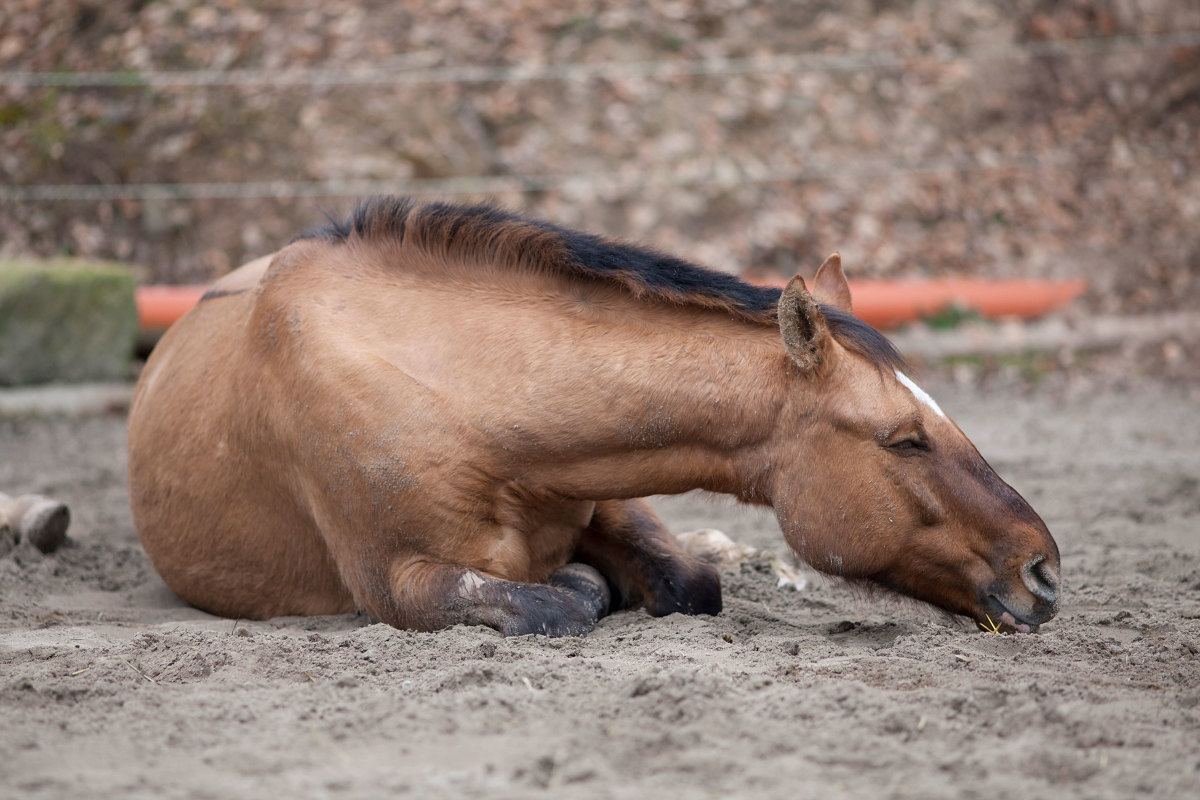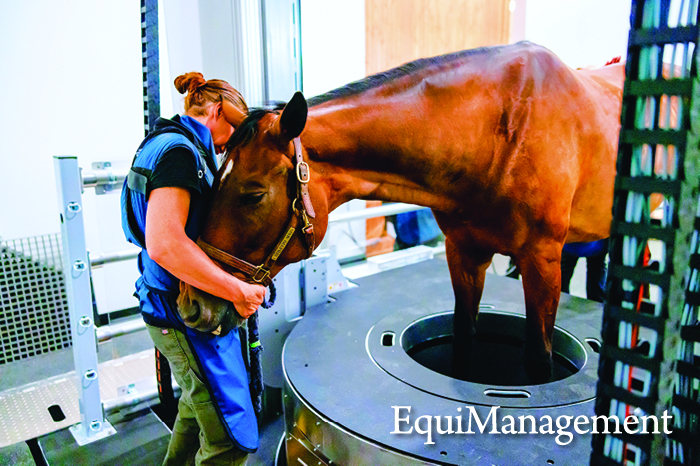
The integrity of the gastrointestinal tract is critical to the health and well-being of the horse. Gastrointestinal issues are the second-leading cause of death in horses, following old age. In this article, we will review some of the current research for the equine gastrointestinal system.
Leaky Gut Syndrome
Leaky gut syndrome (LGS) is associated with increased intestinal permeability. which allows passage of potentially harmful substances through the intestinal barrier. That leads to intestinal and systemic inflammation. Some of these harmful substances include food antigens, bile, hydrolytic enzymes, pathogens and bacterial components such as endotoxin.
Not only can leaky gut syndrome lead to life-threatening intestinal illness and/or obstructions, but it can also elicit more chronic disorders that cause weight loss and poor performance. Alterations in blood flow to the GI tract and changes in microbiota, along with increased production of inflammatory cytokines, are just a few consequences to increases in intestinal permeability.
A recent journal article (Alterations in Intestinal Permeability: The Role of the “Leaky Gut” in Health and Disease by Stewart, A.S.; Pratt-Phillips, S.; Gonzalez, L.M.; JEVS, Mar 2017) observed: “Sequelae to leaky gut may include weight loss and poor performance in mild cases and inflammatory bowel diseases (IBD), systemic inflammatory response syndrome (SIRS), multiple organ dysfunction syndrome (MODS) or death in severe cases.”
Dysfunction of the intestinal barrier with leakage of lipopolysaccharides (LPS) into internal parts of the body creates inflammation and increased production of pro-inflammatory cytokines.
Causes of Leaky Gut Syndrome Leaky gut syndrome has a variety of potential inciting causes, including:
- Physical or physiologic stress can increase release of adrenal corticosteroids and mast cells that adversely affect the intestinal barrier.
- Strenuous exercise with diversion of blood to active tissues leads to decreased blood flow to the GI tract with the potential for associated intestinal damage and increased permeability. Reperfusion of ischemic tissue results in increases in reactive oxygen species that further injure intestinal barrier function. Heat stress elicits vasoconstriction within the splanchnic circulation to amplify peripheral blood flow to dissipate internal heat. High internal temperatures along with reduced GI blood flow create tissue hypoxia, acidosis, ATP depletion and oxidative stress; this can disrupt the intestinal barrier and tight junctions. (This is defined as closely associated areas of two cells whose membranes join together, thus forming a barrier virtually impermeable to fluid.)
- Dehydration is associated with increased GI permeability related to reduced intestinal blood flow and systemic changes.
- Enteric pathogens binding to the cell surface can alter the integrity of tight junctions.
- Mycotoxins also play a role in increasing intestinal permeability.
- Inflammatory bowel disease and abnormal populations of immune cells in the GI tract can increase intestinal permeability.
- Changes in hindgut microbiota occur with abrupt dietary changes, colic, systemic antimicrobial administration, and/or excessive carbohydrate ingestion. Undigested starch that spills over to the hindgut increases volatile fatty acids and acidosis in the bowel with associated intestinal damage.
- NSAIDs interfere with mucosal barrier function of the GI tract as well as altering intestinal motility. Prostaglandin inhibition results in reduced blood flow to intestinal mucosa. In addition, prostaglandin inhibition decreases mucus secretion that protects the intestinal lining, leading to increased exposure of the stomach lining to hydrochloric acid and gastric ulcer syndrome. NSAIDs coupled with exercise might exacerbate GI permeability.
Evaluation of Intestinal Permeability Studies using carbohydrate probes identify areas of intestinal permeability by measuring their presence in plasma or urine. Sucrose excreted in the urine or plasma indicates gastric permeability, since sucrase enzymes don’t exist in the stomach.
Lactulose is used as a probe for small intestinal permeability and sucralose probes for small or large intestinal permeability, since it bypasses the entire GI tract without digestion.
Potential Treatment Options for LGS Studies looking into solutions for leaky gut syndrome have examined the use of butyrate, a short chain fatty acid that is the preferred energy-providing substrate for colonocytes. Butyrate is either naturally produced by microbiota in the intestinal tract or ingested as an oral feed additive.
A study (Guilloteau, Martin, Eeckhaut, Ducatelle, Zabielski and Van Immerseel; From the Gut to the Peripheral Tissues: The Multiple Effects of Butyrate; Nutrition Research Reviews (2010), 23, 366–384) reported: “In physiological conditions, the increase in performance in animals could be explained by increased nutrient digestibility, the stimulation of the digestive enzyme secretions, a modification of intestinal luminal microbiota and an improvement of the epithelial integrity and defense systems. In the digestive tract, butyrate can act directly (upper gastrointestinal tract or hindgut) or indirectly (small intestine) on tissue development and repair. Butyrate has also been implicated in down-regulation of bacterial virulence, both by direct effects on virulence gene expression and by acting on cell proliferation of the host cells.”
The article further noted that besides providing epithelial cells with energy, butyrate markedly increases epithelial cell proliferation and differentiation, and improves colonic barrier function. There are improvements in both the small and large intestinal tract from butyrate’s positive effects.
The JEVS article (referenced above) reported that, “Amino acids are essential substrates required for protein, nitric oxide and polyamine synthesis, and serve as a major fuel for the small intestinal mucosa. Several studies support the potential therapeutic benefit of amino acids including glutamine, arginine, lysine, threonine, and others in gut-related disease.”
Mineral supplements also could play a role. Investigation into organic zinc might hold some promise. In many animal and human models, zinc supplementation has been reported as beneficial to healing of intestinal disease and reducing intestinal permeability. Studies still need to be pursued in horses with intestinal disease to determine if this is a worthwhile therapeutic strategy.
Similarly, selenium and vitamin E deserve more scrutiny as potentially beneficial substances for intestinal disease.
Chelation of organic minerals might aid in protection and healing of the equine GI tract. A study at Michigan State University’s Horse Teaching and Research Center included 20 mature horses given free access to water and twice daily feeding of hay at 1.5% of body weight. The horses were split into two groups—one fed organic mineral supplement and the other an inorganic supplement. On Day 42, phenylbutazone was given twice daily for a week, then sucrose was administered. Blood samples were obtained at 15-minute intervals the first hour and 90 minutes post-sucrose administration. Urine was collected four hours following sucrose administration.
Mineral treatments were continued after the phenylbutazone and sucrose administrations. Gastric endoscopy was performed twice more in the final two weeks of the study. Ultimately, there were no significant differences between the two mineral supplement treatments as to ulcer score, body weight or condition, or behavior.
The study did underscore the potential role of phenylbutazone in exacerbating gastric ulcer incidence: Clinically significant ulcer scores (of 2 or greater) jumped from 33% at Day 42 just prior to phenylbutazone administration to 94% at Day 49 following a week of phenylbutazone medication. However, in the study, neither organic nor inorganic mineral supplementation resulted in any appreciable attenuation of ulcer scores or healing.
The use of probiotics or prebiotics, or a combination of the two (symbiotic), might show promise, but more studies are warranted. Results using probiotics have been variable and inconsistent, particularly in horses with intestinal disease.
Return to Sport Following Colic Surgery
Depending on many variables—among them surgical lesion and repair, age of the horse and post-operative complications—horses experiencing colic surgery have had mixed results regarding long-term survival and return to use. Previous reports suggested that 66-91% survive at least one year. Complications exist, such as an incisional hernia or infection.
An additional significant complication is that of another surgical colic event, usually within 100 days post-op, specifically with small intestinal strangulation or right dorsal displacement of the colon.
Studies on Thoroughbred racehorses found that 63-76% are able to return to racing, while results studied in a variety of breeds and use have assessed 76-86% owner satisfaction that their horses was able to return to previous or intended uses.
A recent study (Immonen, et al., Long term follow‑up on recovery, return to use and sporting activity: a retrospective study of 236 operated colic horses in Finland 2006–2012. Acta Vet Scand (2017) 59:5) retrospectively examined long-term effects of colic surgery on a variety of breeds and genders of Finnish horses more than eight years following celiotomy. The study looked at effects of a horse’s age, surgical lesion location and post-operative complications, as well as the incidence of repeated colic episodes and owner satisfaction with the outcome.
Of 236 surgical colic cases reviewed between 2006-2012, 125 horses were discharged following their procedures. Lesions varied with 37% non-strangulating large intestinal (LI) displacement, 22% small intestinal strangulation and 20% strangulating LI displacement. Post-operative reflux occurred in 27% of the surgery patients. Approximately 17% were euthanized on the table; of the 82% recovered from anesthesia, 21% were euthanized before discharge. Nearly 6% of horses had a repeat surgery, with most of these requiring a second laparotomy prior to discharge.
Warmblood breeds comprised nearly 39% of the 125 horses successfully discharged post-op. The study found:
- Incidence of post-operative colic in the first year was 20%. Previous studies estimated that horses with previous colic surgery had a 2.8 to 7.6 times greater incidence of colic than horses that had not undergone colic surgery.
- Horses operated on for a large intestinal lesion were more than three times more likely to experience another colic episode than those operated on for small intestinal lesions.
- An incisional hernia has been reported to reduce the chance of return to athletic pursuits by a factor of 7 to 14 times. However, in this study, an incisional hernia did not negatively affect a horse’s return to athletic function.
- Of horses surviving to discharge, median survival time was 79.2 months (about 6½ years). Those with small intestinal lesions had longer convalescent times and less longevity than horses operated for LI lesions. However, many horses with small intestinal lesions had good survivability and were able to perform for 10 years post-op.
- As for this study’s results about return to intended use, 83% were able to do so, with 78% staying at their current level or moving on to higher levels of performance, according to owner assessment.
In summary, the study reported that “Incisional hernia and incidence of postoperative colic—in contrast to previous studies—as well as the age of the horse, location of the surgical lesion and convalescence time, did not decrease the probability of performance after the surgery.”
Further, it noted: “The majority of discharged horses had a good prognosis for long-term survival, were able to return to their intended use, compete postoperatively on a satisfactory level and also perform for several years after the operation.”
The positive findings of this retrospective report can help practitioners counsel clients about whether or not to pursue colic surgery for a horse expected to remain an equine athlete.
Take-Home Message
With colic and intestinal issues being a major health risk in the lives of patients, veterinarians need to understand the most recent research that can help them care for horses more effectively. Research can help veterinarians advise clients as to the best treatments for their horses.

![[Aggregator] Downloaded image for imported item #18216](https://s3.amazonaws.com/wp-s3-equimanagement.com/wp-content/uploads/2025/09/30141837/EDCC-Unbranded-8-scaled-1-768x512.jpeg)


